Traumatic Brain Injury/Cognition Research
- Improved Cognitive Function After Transcranial, Light-Emitting Diode Treatments in Chronic, Traumatic Brain Injury: Two Case Reports-https://www.ncbi.nlm.nih.gov/pmc/articles/PMC3104287/ “Seven years after closed-head TBI from a motor vehicle accident, Patient 1 began transcranial LED treatments. Pre-LED, her ability for sustained attention (computer work) lasted 20 min. After eight weekly LED treatments, her sustained attention time increased to 3 h. “Patient 2 had a history of closed-head trauma… After 4 months of treatments, medical disability discontinued; she returned to working full-time as an executive consultant with an international technology consulting firm. Neuropsychological testing after 9 months of transcranial therapy indicated significant improvement (+1, +2SD) in executive function (inhibition, inhibition accuracy) and memory, as well as reduction in post-traumatic stress disorder.”
Taking A Light Approach to Treating Acute Ischemic Stroke Patients: Transcranial Near-Infrared Laser Therapy Translational Science-https://www.ncbi.nlm.nih.gov/pmc/articles/PMC3059546/ “Based upon the scientific justification presented in this review and the efficacy profile of NILT in multiple preclinical translational models and in 2 randomized clinical trials in AIS patients, NILT should be pursued as a possible important neuroprotective treatment for stroke patients.”
Improved Cognitive Function After Transcranial, Light-Emitting Diode Treatments in Chronic, Traumatic Brain Injury: Two Case Reports-https://www.ncbi.nlm.nih.gov/pmc/articles/PMC3104287/ “Seven years after closed-head TBI from a motor vehicle accident, Patient 1 began transcranial LED treatments. Pre-LED, her ability for sustained attention (computer work) lasted 20 min. After eight weekly LED treatments, her sustained attention time increased to 3 h. “Patient 2 had a history of closed-head trauma… After 4 months of nightly LED treatments at home, medical disability discontinued; she returned to working full-time as an executive consultant with an international technology consulting firm. Neuropsychological testing after 9 months of transcranial LED indicated significant improvement (+1, +2SD) in executive function (inhibition, inhibition accuracy) and memory, as well as reduction in post-traumatic stress disorder.”
Treatments for traumatic brain injury with emphasis on transcranial near-infrared laser phototherapy-https://www.ncbi.nlm.nih.gov/pmc/articles/PMC4550182/ “In ten patients with chronic TBI (average time since injury 9.3 years) given ten treatments over the course of 2 months using a high-power NIR laser (13.2 W/0.89 cm2 at 810 nm or 9 W/0.89 cm2 at 810 nm and 980 nm), symptoms of headache, sleep disturbance, cognition, mood dysregulation, anxiety, and irritability improved.”
Significant improvements in cognitive performance post-transcranial, red/near-infrared light-emitting diode treatments in chro
Can transcranial photobiomodulation improve cognitive function? A systematic review of human studies “Of the 35 studies identified, 29 (82.9 %) studies reported positive improvement in cognitive functions after tPBM. All nine studies on participants with subjective memory complaints, mild cognitive impairment, and dementia, showed positive outcomes. Seven (87.5 %) studies on traumatic brain injury (TBI) patients also showed positive results.”-https://www.sciencedirect.com/science/article/abs/pii/S1568163722002288
Transcranial Photobiomodulation Treatment: Significant Improvements in Four Ex-Football Players with Possible Chronic Traumatic Encephalopathy-https://pubmed.ncbi.nlm.nih.gov/36777329/ “After tPBM, these ex-football players improved. Significant correlations of increased SN FC and CEN FC with specific cognitive tests and behavior/mood ratings, plus increased NAA in ACC support beneficial effects from tPBM.”
Transcranial Photobiomodulation Improves Cognitive Performance in Young Healthy Adults: A Systematic Review and Meta-Analysis-https://pubmed.ncbi.nlm.nih.gov/31549906/ “We demonstrated a significant, beneficial effect of t-PBM on cognitive performance of young, healthy individuals.”
Transcranial Infrared Laser Stimulation Improves Cognition in Older Bipolar Patients: Proof of Concept Study-https://journals.sagepub.com/doi/10.1177/0891988720988906 “We found TILS-induced improvements in cognitive performance on the tasks that measure cognitive flexibility and impulsivity, after 5 Photobiomodulation, Depression, Anxiety, and Cognitionweekly sessions of TILS. We concluded that TILS appeared both safe and effective in helping alleviate the accelerated cognitive decline present in older bipolar patients.”
Improving executive function using transcranial infrared laser stimulation.-https://www.ncbi.nlm.nih.gov/pmc/articles/PMC4662930/ “Our study suggests that transcranial LLLT may have a range of potential benefits for cognitive enhancement.”
Photobiomodulation improves the frontal cognitive function of older adults-https://pubmed.ncbi.nlm.nih.gov/30474306/ “Significant group (experimental, control) × time (pre-PBM, post-PBM) interactions were found for the flanker and category fluency test scores. Specifically, only the older adults who received real PBM exhibited significant improvements in their action selection, inhibition ability, and mental flexibility after vs before PBM. Conclusions: Our findings support that PBM may enhance the frontal brain functions of older adults in a safe and cost-effective manner.”
Transcranial, Red/Near-Infrared Light-Emitting Diode Therapy to Improve Cognition in Chronic Traumatic Brain Injury-https://www.liebertpub.com/doi/full/10.1089/pho.2015.4037 “Testing was performed before and after transcranial LED (tLED; at 1 week, 1 month, and at 2 months after the 18th treatment) and showed significant improvements in executive function and verbal memory. There were also fewer post-traumatic stress disorder (PTSD) symptoms reported.”
Effects of Photobiomodulation on Changes in Cognitive Function and Regional Cerebral Blood Flow in Patients with Mild Cognitive Impairment: A Pilot Uncontrolled Trial.-https://europepmc.org/article/MED/34420956 “Results: Regarding rCBF, statistically significant trends were found in the medial prefrontal cortex, lateral prefrontal cortex, anterior cingulate cortex, and occipital lateral cortex. Based on the cognitive assessments, statistically significant trends were found in overall cognitive function, memory, and frontal/executive function. Conclusion: We confirmed the possibility that PBM treatment in the VA and ICA areas could positively affect cognitive function by increasing rCBF.”
